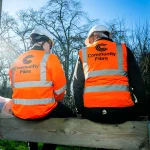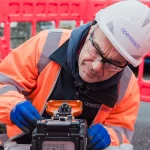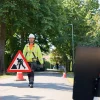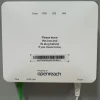UK and Scottish Governments Row Over Superfast Broadband AGAIN
A sense of the familiar could be felt toward the end of last year, when the UK and Scottish Government’s first locked horns over the coverage levels of “superfast broadband.” Now they’re at it again after Scotland claimed to have achieved the 95% “fibre broadband” coverage target, but there’s a problem.
Over the past few years many Broadband Delivery UK supported rollout projects have, often at the beset of local authorities, almost ritualistically blurred the lines of communication on this subject. At the centre of all this is a debate over how both they and the central Governments of each country define the performance and coverage of what is actually being deployed.
Long-time readers will know that we’ve often raised this subject and try our best to gain clarifications whenever it crops up, although our calls for clarity aren’t always heeded. The issue is most often punctuated by the almost interchangeable use of phrases like “high speed fibre broadband“, “fibre broadband” and “superfast broadband.”
Advertisement
Ignoring the fact that in this case “fibre broadband” often only means a rollout dominated by slower hybrid fibre technologies (FTTC / VDSL2), rather than pure ultrafast fibre optic connectivity (FTTH/P), the meaning of these three phrases tends to vary from place to place and contract to contract. This makes it a nightmare for both us and ordinary people to figure out what each rollout project is actually aiming to deliver.
This issue is on-going across various projects around the UK but today our focus is on Scotland.
Keith Brown, Scotland’s Economy Secretary, said (Scotsman):
“The latest coverage figures are currently being assured, but we shortly expect to be able to confirm that our Digital Scotland Superfast Broadband programme achieved its target of extending fibre broadband access to 95 per cent of homes and premises by the end of 2017.”
At this point the UK Government’s Culture and Digital Secretary, Matt Hancock MP, criticised the claim by highlighting that Scotland’s definition of “fibre broadband” was not necessarily equal to the “superfast broadband” definition that most other project’s use.
The £428m Digital Scotland project has never spelled out precisely what they mean by “fibre broadband” (in speed terms) but our understanding has always been that it largely reflects the raw fibre footprint of related technologies, which will sadly also include areas that may receive slower than superfast speeds due to the distance limits of VDSL2 over copper lines etc.
Advertisement
By comparison the UK Government’s overall aim has been to achieve 95% coverage of “superfast broadband” by the end of 2017, which they’ve long defined as needing to offer download speeds of greater than 24Mbps. We should point out that both Ofcom and the EU blur the lines by defining “superfast” as 30Mbps+ and in fact so does the Scottish Government. The most recent contracts in England and Wales now also define as 30Mbps+.
Extracts from the Digital Scotland Website
1. “The Scottish Government is committed to delivering fibre broadband coverage to at least 95% of Scottish premises by the end of 2017 under the current Digital Scotland Superfast Broadband (DSSB) programme.”
2. “What is superfast broadband? – Cable, FTTC and FTTP are collectively known as next-generation access networks, while superfast broadband is defined as delivering headline download speeds of greater than 30 Mbit/s.”
3. “The Scottish Government and its partners are extending high speed fibre broadband to around 95% of Scotland by the end of March 2018.”
Suffice to say that Scotland and many other BDUK supported projects would certainly help their constituents by splitting the figures out and communicating them correctly. We have no problem with politicians referencing the raw fibre based coverage of their networks, just so long as they also highlight the coverage of 24Mbps+ and / or 30Mbps+ connectivity alongside so that nobody ends up getting confused!
However politicians often prefer to use the general fibre based coverage figure because it enables them to highlight a bigger percentage, even if that doesn’t always reflect “superfast” speeds. We should state that some other projects do mean “superfast” when they state “fibre broadband” but as we say, it varies and hence the confusion.
Thinkbroadband’s data from the end of 2017 helps to show where Scotland actually stands. Take note that the ‘Highlands and Islands‘ and ‘Rest of Scotland‘ areas below represent the two halves of Scotland’s overall roll-out programme, while the figures for ‘Scotland‘ alone represent the combined total coverage.
Advertisement
| Area | % Fibre based | % Superfast 24Mbps+ | % Superfast 30Mbps+ |
| United Kingdom | 97.40% | 94.7% | 94.30% |
| Rest Of Scotland | 97% | 94.3% | 94% |
| Scotland | 96.60% | 93.1% | 92.70% |
| Highlands and Islands (Scotland) | 89.70% | 77.9% | 76.50% |
In short, Scotland has indeed exceeded the 95% target for “fibre based” broadband coverage, although they’re lagging a little bit behind on the definition of superfast broadband. On the other hand the contract doesn’t actually complete until the end of March 2018 and some politicians might call that the end of the 2017 “financial year.” Fun.
The good news is that the future R100 programme has more clearly defined its aspiration as being to extend superfast broadband (30Mbps+) networks to cover 100% of premises in Scotland by the end of 2021 (or March 2022 as a financial year). So at least it should be much easier to judge future contracts and progress.
In closing, it’s important to remember that the % figures put out by such projects are modelled estimates and should always be taken with a pinch of salt. Sadly such figures won’t always reflect real-world experiences and this is particularly true where issues like faulty lines, poor home wiring, slow WiFi and other problems can result in much slower speeds than expected.
Mark is a professional technology writer, IT consultant and computer engineer from Dorset (England), he also founded ISPreview in 1999 and enjoys analysing the latest telecoms and broadband developments. Find me on X (Twitter), Mastodon, Facebook, BlueSky, Threads.net and Linkedin.
« ONS Re-examines Impact of Telecoms Services on the UK Economy

















































Comments are closed